HARDY PALMS
Hardy Palm Trees for Deep South Yards and Gardens
Go to:
| Cabbage Palm | Windmill Palm | Chinese Fan Palm | Mediterranean Fan Palm | Pindo Palm |
| Canary Island Date Palm | Date Palm | Dwarf Palmetto | Needle Palm | Sylvester Palm | Sago Palm |
Unlike most of the other plants, we do not always have all of these varieties available on hand. Please inquire about size and availability.
About the photos:
Photos show both a more mature specimen and a nursery container plant, which shows how the plant will likely appear in the nursery.
Cabbage or Sabal Palm (Sabal palmetto)
Sabal palmetto, AKA cabbage palm, cabbage palmetto, sabal palm, blue palmetto,
Carolina palmetto, common palmetto, Garfield's tree, and swamp cabbage, is one of 15 species of palmetto palm. It is native to the Southern
United States, the Yucatán Peninsula in Mexico, and the West Indies.
Hardy to 15°F to 20°F for short periods without significant damage. However, prolonged exposure to freezing temperatures
or severe frosts can cause damage to the foliage and impact its overall health. Dislikes wet feet, give it good drainage!
|
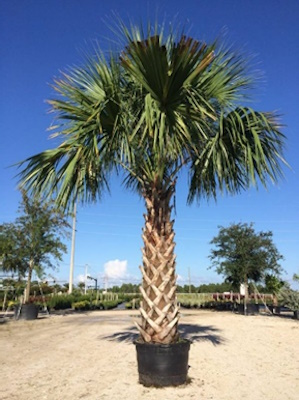 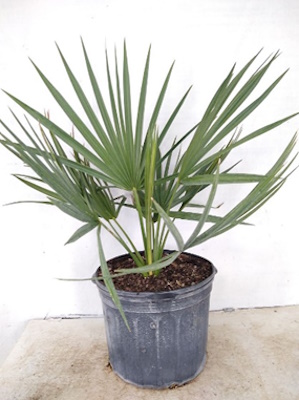 |
Windmill palm (Trachycarpus fortunei)
One of the hardiest of all palm trees resists winters very well, even temperatures dropping to the 5 to 14 °F range.
It has even been reported to survive -5°F! Native to China, this palm tree grows gigantic leaves that reach to nearly 6 feet long.
This tree grows rather fast, for a palm, topping out at 30 to 35 feet when grown in the ground where the drainage is good.
|
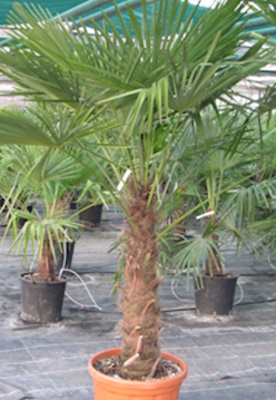 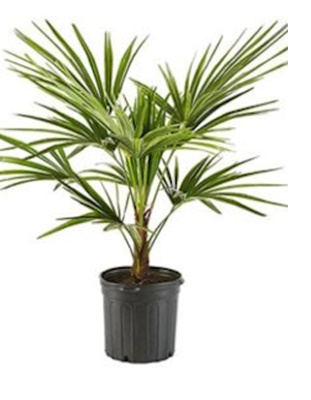 |
Chinese Fan Palm (Livistona chinensis)
This hardy palm is native to southeastern China, Tiawan, and Japan. It can grow as high as 30 to 40 feet in milder climates.
It can tolerate brief periods of temperatures down to 15 degrees F. As with most palms, give it good drainage.
|
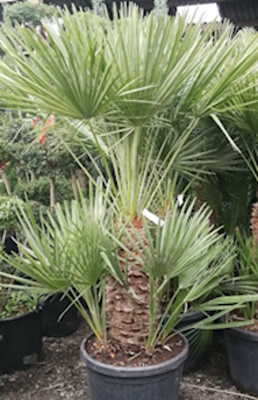 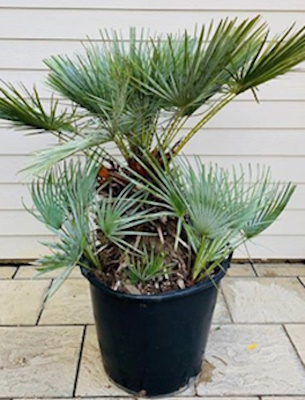 |
Mediterranean Fan Palm (Chamaerops humilis)
Native to Southern Europe, Western Mediterranean, and Northern Africa, this palm, which is hardy down to 10 degrees F,
can grow anywhere from 10 to 20 feet tall. Needs excellent drainage.
|
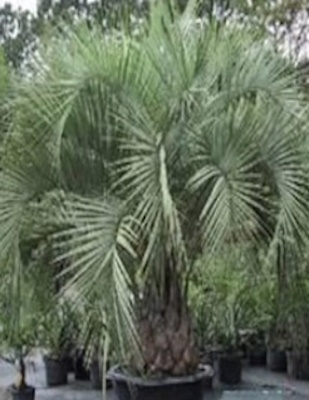 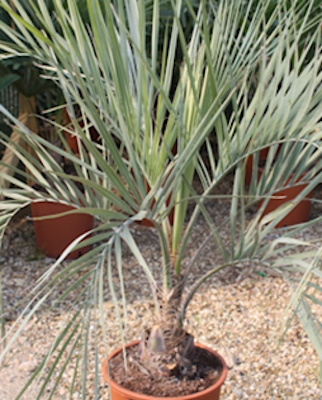 |
Pindo Palm or Jelly Palm (Butia capitata)
Native to Uruguay, Argentina, and Brazil, the Butia capitata is amazingly hardy to cold temperatures (to USDA zone 8).
The Pindo palm can reach heights up to 10 or even 20 feet though it will take years to grow that tall. Give it Full Sun to part shade and good drainage.
|
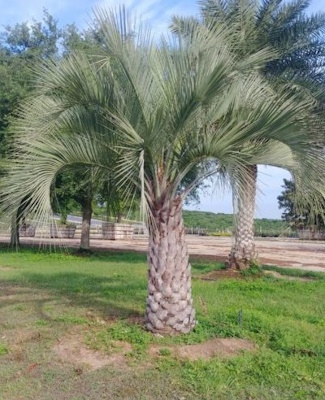 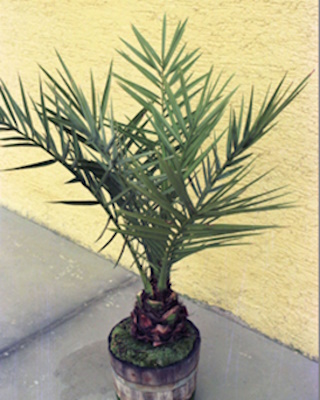 |
Canary Island Date Palm (Phoenix canariensis)
This attractive palm native to Canary Islands and North Africa is hardy to 15 to 20 degrees F (USDA zone 8b).
Also called Pineapple Palm, it can grow very large, 50 to 60 feet tall in frost free areas. Prefers full sun and good drainage.
|
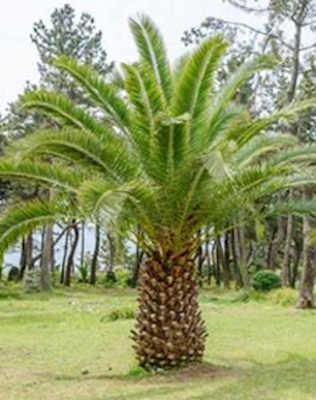 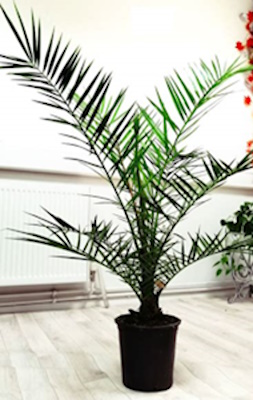 |
Date Palm (Phoenix dactylifera)
This palm is hardy from 25 to 30 degrees F. USDA zone 8b-9a
In mostly frost-free areas this palm can grow rather large, slowly to 75 feet tall. Likes full Sun and needs good drainage.
|
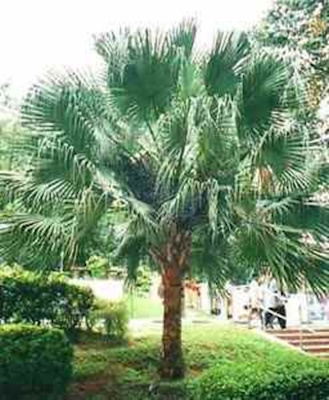 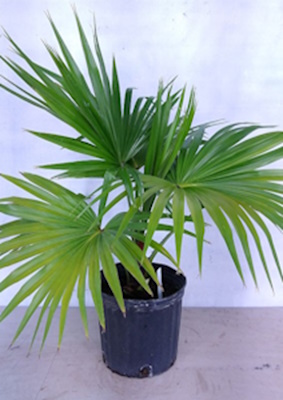 |
Dwarf Palmetto (Sabal minor)
The dwarf Palmetto is leaf hardy down to 0 degrees F. This slow growing palm can attain the height of 12 feet in excellent growing conditions. It does best in hot, humid locations. Full Sun or partial shade and good drainage.
|
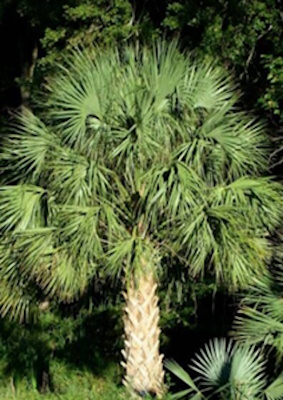 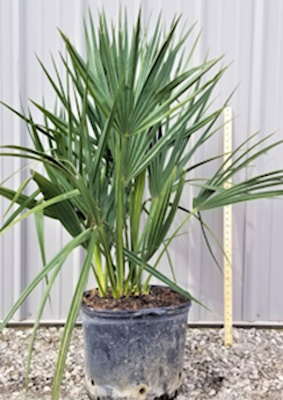 |
Needle Palm (Rhapidophyllum hystrix)
Cold hardy to around 0 degrees Fahrenheit. Prefers hot and humid summer weather, USDA zones 7 to 10. Normally growing up to 10 feet tall, this palm can reach 20 feet in excellent growing conditions. Prefers partial shade and excellent drainage.
|
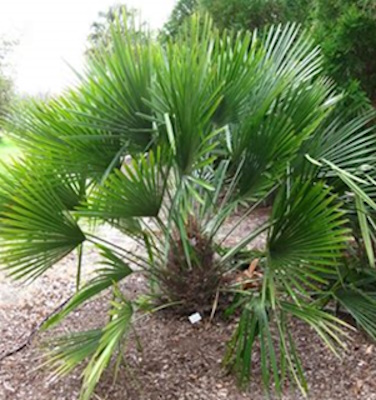 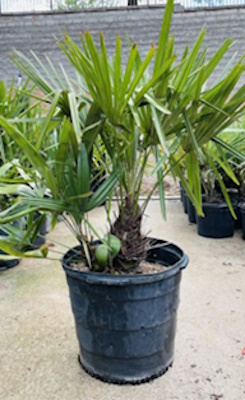 |
Sylvester Date Palm (Phoenix sylvestris)
Cold hardy to around 15 to 20 degrees Fahrenheit. Prefers hot and humid summer weather, USDA zone 8b-9a. Normally growing up to 20 feet tall, this palm can reach 30-40 feet in excellent growing conditions. Prefers sun and excellent drainage. This palm is essentially a lower growing version of the Canary Island Date Palm.
|
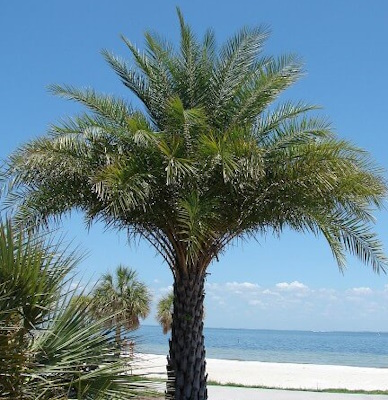 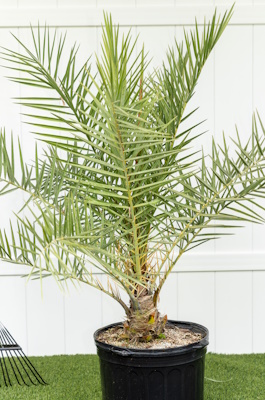 |
Sago Palm (Cycas revoluta)
Also called King Sago is not a true palm tree at all but is a cycad that looks similar to a palm and also produces seeds.
The Sago cycad is a slow-growing plant native to southern Japan. It can grow over 20 feet tall but may take 50 to 100 years to achieve this height.
Growing in the ground a Sago Palm can survive brief periods of temperatures as low as 15 degrees F. even though an un-seasonable hard freeze can damage the leaves.
|
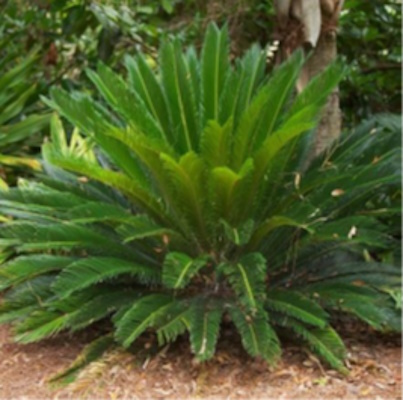 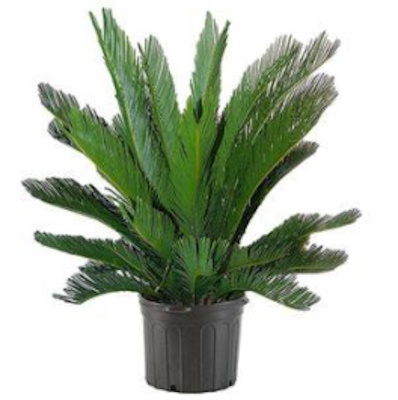 |
How to plant and care for Hardy Palms
Palms should be planted no deeper than the top of the soil ball, generally in full sun or, at least, partial shade.
Even thought these plants are drought tolerant and require good drainage to grow well,
it is wise to check young and/or newly planted palms regularly for watering, especially during dry spells.
When pruning, it's best to only prune dead foliage since excessive pruning of healthy green fronds could harm a palm.
DO NOT OVER FERTILIZE! Young palms are sensitive to high levels of nitrogen fertilizer.
Always use slow release fertilizer when feeding palms. Remember that palms are generally slow growing plants and cannot benefit from excessive fertilizing.
Copyright ©
Green Thumb Nursery. All Rights Reserved.
|

